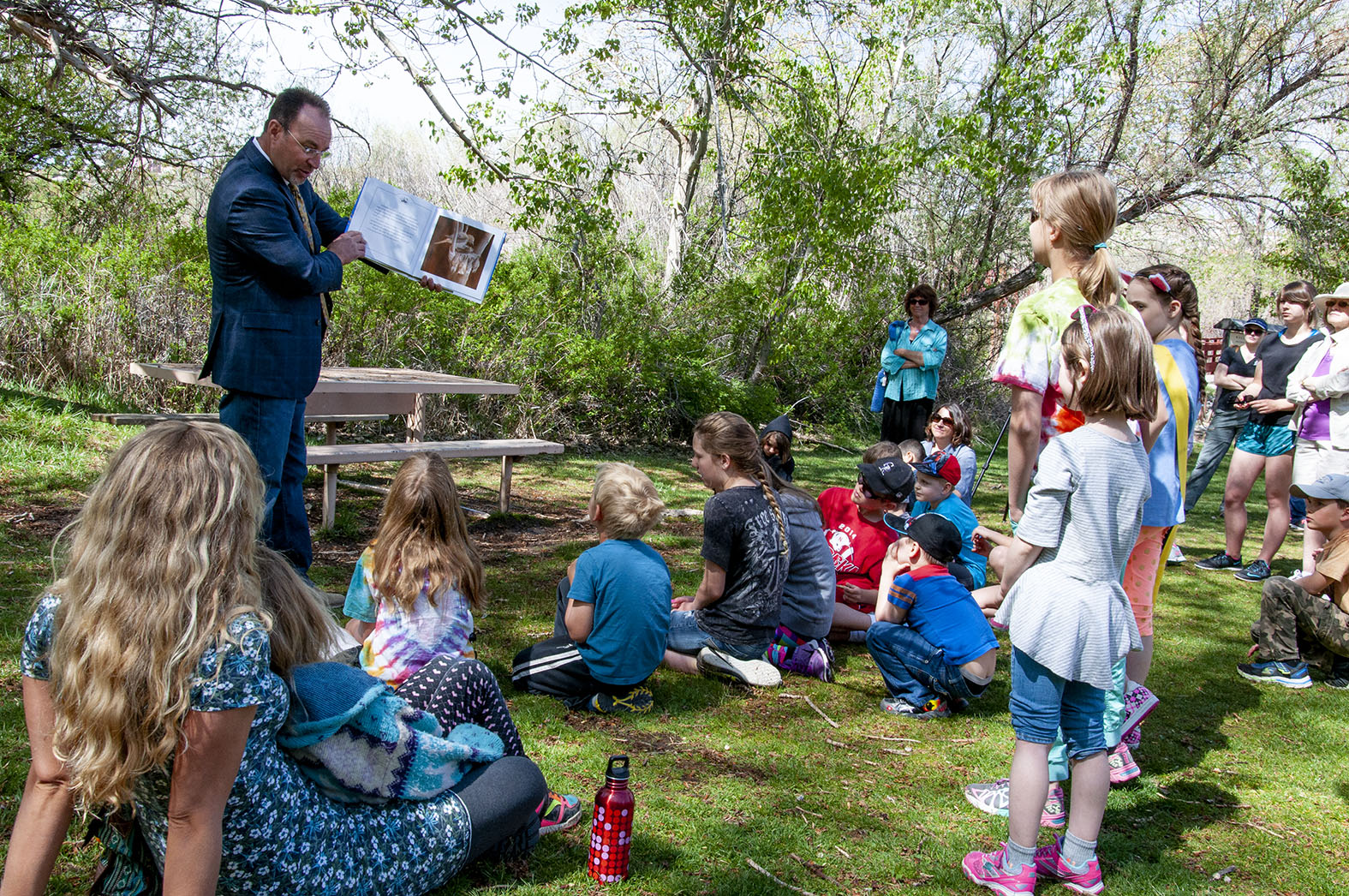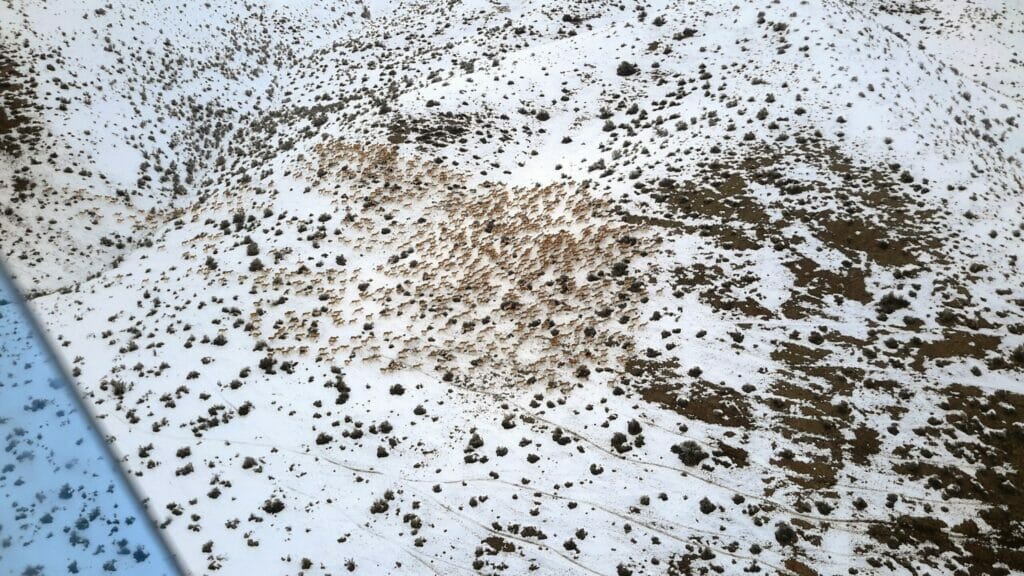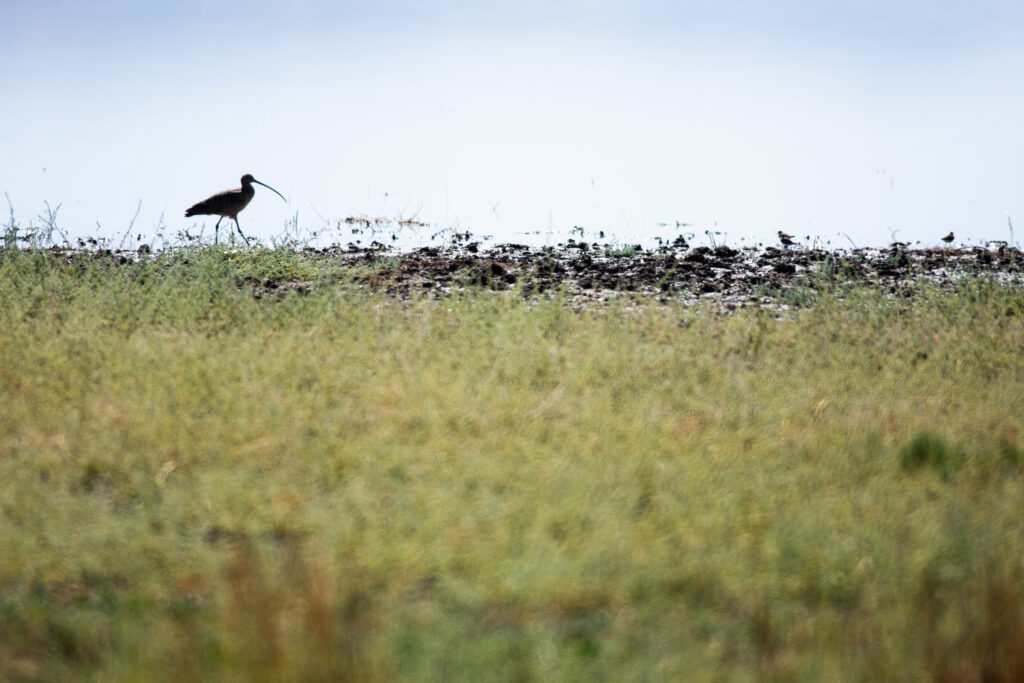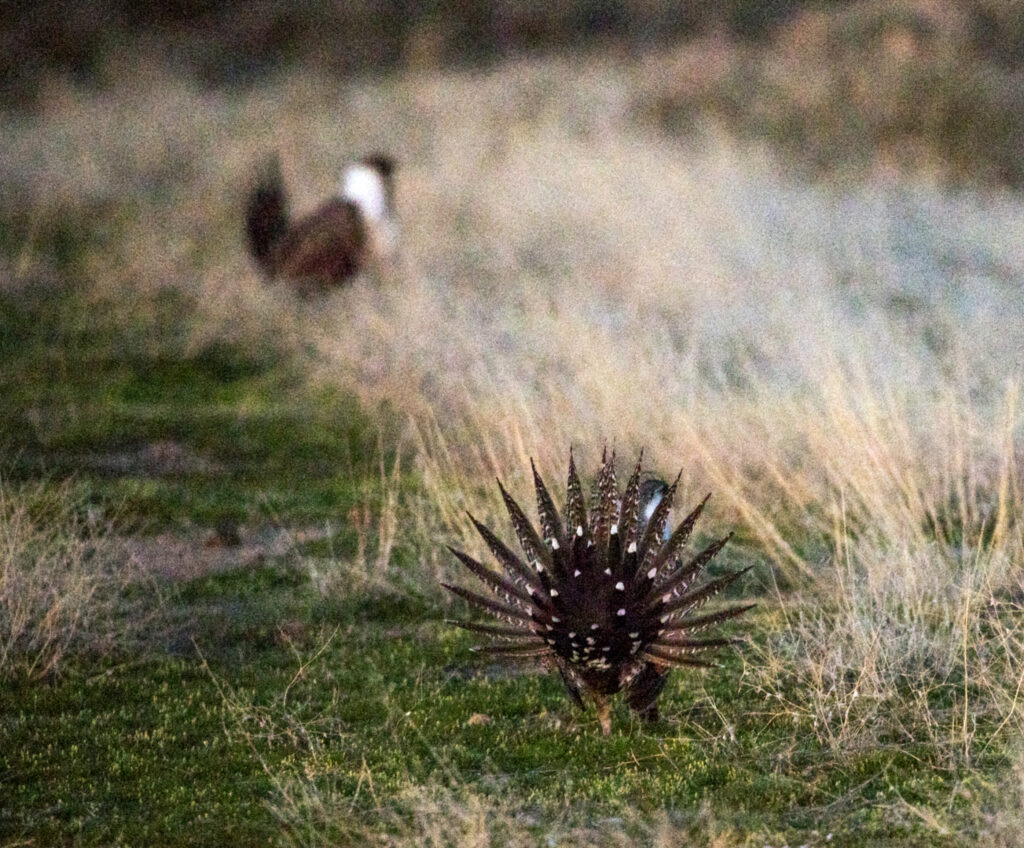Outgoing NDOW director talks about agency funding, protecting the sagebrush biome

Good morning, and welcome to the Indy Environment newsletter.
As always, we want to hear from readers. Let us know what you’re seeing on the ground and how policies are affecting you. Email me with any tips or suggestions at [email protected]
To get this newsletter in your inbox, subscribe here.
Talk to most biologists and they will tell you that so much about wildlife management comes down to habitat. Without intact habitat, it is difficult for species to survive, especially in unforgiving terrain like the Great Basin and Mojave, where many birds and critters are sensitive to changes.
Tony Wasley, the outgoing and longtime director of the Nevada Department of Wildlife (NDOW), stressed that point in an interview with The Nevada Independent this week. Wasley, a biologist by training, said he views the sagebrush sea as one of the “most imperiled ecosystems in the country,” up there with the Florida Everglades, Chesapeake Bay and the California Delta.
The job of directing the state’s wildlife department is not only focused on Nevada’s fish, birds and mammals, but also on conserving the habitat that allows their populations to survive. The agency, almost entirely funded by hunting and fishing activity fees, has a big portfolio and mission, despite operating with a lean staff of wildlife biologists, game wardens and habitat specialists.
“We’re incredibly effective,” Wasley said. “But going forward, to continue to deal with the effects of climate change, to continue to deal with this shift toward clean and renewable energy, and to continue to expect the state’s wildlife resources to have a voice in those processes — it’s getting more and more difficult and, quite frankly, it requires more people."
For nearly 10 years, Wasley has held the job as the director, first appointed by Republican Gov. Brian Sandoval and staying on through Democratic Gov. Steve Sisolak’s administration. In that time, he has served on several statewide and national boards. Most recently, he served as the president of the Association of Fish and Wildlife Agencies. Wasley was also recently appointed to a federal council focused on guiding policies around future hunting and conservation efforts.
As Wasley prepares to leave the agency, we spoke with him about state wildlife management, the agency’s funding, its focus around conservation, habitat loss and protecting the sagebrush ecosystem. The Q&A, a roughly hour-long interview, has been edited for length and clarity.
Q: With all of the groups that NDOW works with, what do you see as the primary mission of the Department of Wildlife and has that changed at all since you started at the agency?
A: The mission is pretty clearly defined and in statute, and there hasn't been any appreciable change in the mission of the agency in the 25-plus years that I've been with the agency. Where the change has been certainly isn't in the statutory language or the agency's mission.
There's climate change that's added some significant challenges. There's environmental change, some of which is related to climate, some of which is independent of it. But if I'm reading between the lines, I kind of think that it's this societal change that has probably been the single most evident change that the department has experienced in my tenure. And by that, I mean society's wildlife value orientations.
When you look at any state wildlife agency — any one in the country — they all struggle to some degree with an exceptionally narrow funding model and an incredibly broad statutory charge. And most of the challenges in the social arena are born out of trying to reconcile expectations of those who are so key to funding the state wildlife agencies and the broader statutory charges.

To put some numbers around that, what percentage of the agency’s funding comes from hunting and fishing licenses and how is that not reconciled with the statutory charge?
So if you look at North America,...the percentage of individuals who pursue recreational hunting — angling is different — is less than 5 percent. In Nevada, it’s less than 3 percent. But when you look at the agency's budget, almost half of it comes directly from [hunting] tag and license fees. Another 45 percent comes from federal excise taxes on hunting and fishing equipment that are administered by the U.S. Fish and Wildlife Service.
…I've been quoted a number of times saying that it's approximately 95 percent of our budget that comes either directly or indirectly from hunting and angling. And that is, on the hunting side, coming from fewer than 3 percent of Nevada citizens… And so when I say trying to reconcile the challenges of this narrow funding model and a broad statutory charge, if you feel that you’re paying for 95 percent of something, then you certainly want to shape the outcome or drive the narrative around it.
The wildlife of every state belongs to the citizens of that state and are held in a public trust by a state wildlife agency. However, the funding of those agencies is disproportionately [coming from] recreational pursuits. But the reality is, of the nearly 900 species that call Nevada home, there's only 8 percent of those that people pursue recreationally with the idea of catching or hunting.
And so my elevator speech is that you're getting 95 percent of your money from roughly 3 percent of your citizens who are paying to pursue 8 percent of your species, and you need to figure out how to engage the other 97 percent of the citizens to take care of the other 92 percent of the species, when there is not, presently, any kind of an effective or sizeable mechanism for society to pay for conservation.
What would you consider to be some of your biggest accomplishments, the things you are most proud of?
You ask that question, and I think about several ways I might answer that. I could say investing in staff and having good equipment and updating computers and technology — GPS, tablets, collars — having the best science available, having professional development and training. But then that almost de-emphasizes the acquisition of critical habitat or the habitat restoration work.
But I think all of it fits under the umbrella of standing in our purpose, which is conservation. It isn't to cater to, you know, a disproportionately small group of individuals, despite the fact that they shoulder the burden of funding. It isn't. It's just standing in our purpose.
The other thing that has struck me with some of the emails and the responses that I've received from people in what I consider the broad conservation arena — whether it's been the cattleman, whether it's been very liberal conservation non-governmental entities or extremely conservative groups — all of them have recognized that leadership aspect… It doesn't conform to my idea of what leadership looks like. I see it more as just standing in our purpose, investing in Nevada's natural resources, investing in employees who are tasked with taking care of those resources, investing in partnerships to enhance the protection of those resources, whether it be at the Legislature or with industry groups. I think it's just having a clear why and a pure why of conservation.
Oh, and by the way, one outcome of successful conservation is the opportunity to pursue some species recreationally, whether it's catch-and-release in fishing, or whether it's harvest for a lean, organic and healthy source of protein to feed your family. But that why, that purpose, is probably the one thing that I'm most proud of — standing in our purpose.
Currently and looking into the future, what are some of the challenges you see for the agency in maintaining that purpose and that conservation focus?
Look around the West. I challenge you to look anywhere in the country and find a state wildlife agency whose law enforcement officers are as responsible for as much area. The square miles per officer in Nevada is three to four times what most states are. And that's true with our biologists, fisheries biologist, game biologists.
And ultimately, that capacity is subject to the Nevada state Legislature. They have expectations too. There's sound governance… There's expectations from citizens, governors, constituents across the board. But I think very few of them truly understand how much we get done with how little. Looking at our general fund contribution, it’s less than a million dollars a year that comes out of the general fund. So we're incredibly frugal. We're incredibly effective. But going forward, to continue to deal with the effects of climate change, to continue to deal with this shift toward clean and renewable energy, and to continue to expect the state’s wildlife resources to have a voice in those processes — it’s getting more and more difficult and, quite frankly, it requires more people. More people that are compensated in ways that can allow them to move here, live here, raise families. I think that's probably one of the biggest challenges.

I want to ask about drought and climate change in particular. How has that affected the agency’s operations and focus over the past couple of years?
One of the things where drought has affected us is fire frequency and invasive [plant] species… We lost approximately a quarter of our priority habitat management areas for sage grouse in a decade due to increased fire frequency, increased fire intensity. A couple of programs that we have now that are specific to some of the drought impacts include post-fire [revegetation]...
We also have really invested in our water development program. We’ve built artificial waters over the past 30 to 40 years. As we lose some of the monsoonal moisture or those patterns change — and we don't get precipitation — you build a dependency on those waters and you get an extreme drought and you have to pivot.
We also have desert fishes in isolated populations. You see [endangered species] listings or proposed listings for various species. I'll just say we've definitely had to adapt and our agency looks different. Not only does it look different in what we do, but our revenue streams. Look at where we are with mule deer. Our mule deer populations are at the lowest level that they've been at in modern history.
A lot of people don't understand the relationship between ungulates and healthy habitat and just want us to go out and kill mountain lions and think these populations are going to miraculously respond. But it doesn't doesn't work that way. Predator control allows a population to respond more quickly to favorable habitat conditions. But if we don't have favorable habitat conditions out there, which clearly we don't for a myriad of reasons, climate change being one, we're going to be hard-pressed to get the result that we want.
I have a question about habitat, specifically in relation to some of the invasive plants like cheatgrass. It’s discussed a lot in the context of sage grouse and sagebrush habitat. But what impact has the conversion of sagebrush habitat been for all sorts of species. And what do you think is needed to kind of stem that from occurring?
That's a critical question. We're talking about the sagebrush biome, and there are 13 Western states that are a part of this sagebrush biome. I see the sagebrush biome as one of the most imperiled ecosystems in the country, akin to the Florida Everglades, the Tallgrass Prairie, the Chesapeake Bay, the California Delta. But I jokingly call the sagebrush biome, the Rodney Dangerfield of biomes: It just doesn't get any respect.
There's over 350 species that live in that sagebrush biome. And sage grouse is kind of the tip of the iceberg. We've already seen a petition to list the pygmy rabbit, which is another sagebrush obligate, and we will see more. It is undoubtedly a fire cycle-related issue. And when you say what needs to happen, I think the most important thing that we can do is identify the core [habitat] areas that exist, and protect those and grow them…
We have this ongoing challenge of accommodating development on public lands with a multiple use mandate. We frequently say multiple use doesn't mean everything everywhere. But as we shift perhaps from oil and gas and gold to geothermal and lithium, it's the same direct impact in the eyes of the species. And, you know, we're kidding ourselves if we think that we're going to be able to mitigate our way to recovery for these species.
It's a little bit like the water issues in Las Vegas. We can't just tighten up our faucets a little bit and think it's gonna be okay. It's unsustainable any way you look at it. And I know people don't like that inconvenient truth. But for the sagebrush ecosystem, there isn't a single answer. Fire and invasives are responsible for [about] 82 percent of the loss. But it's a myriad of solutions.
And some of those things are out of our control. Mother Nature and getting some precipitation. Using some modern chemistry, some chemical fallowing agents to get some native or at least non-native seed that allows for succession, staging fire resources in strategic areas. That goes back to identify the core, protect the core and grow the core. So it requires a strategic approach and it requires great partnerships across the state, federal and private industry, working together with a willingness to in some instances, ask the question, is there a better place?

You mentioned the pressures on public land from development. As we shift from oil and gas and have different types of energy proposals, mining proposals around the energy transition. Have you been involved in any of the discussions around smart-from-the-start planning process? And is that something you think could be a path forward?
I think it's a great concept. I think it's been fruitful. This is something that I think has been missing. It’s smart planning. It's avoidance from the outset, not just pay-to-play — what's it going to cost us to do it here? And I see [planning] as a better way of doing business. And it prevents our industry partners from becoming so financially invested [in a project] that they want to force things through and they're not able to pivot at some certain level of commitment.
To have a smart-from-the-start discussion, to me, seems like it would provide more business certainty for investors with a more likely outcome, the accomplishment of what they're trying to do, but in ways that can minimize, if not completely offset, [wildlife] impacts.
One lighter question. Given all your time at the agency, is there a species that you are particularly fond of, interested in or find particularly notable?
I can think of several experiences that have been really profound — seeing a huge herd of pronghorn antelope with the broken cloud-sky and rays of light, hitting a plateau. It almost looks like a portrait from a biblical scene… and knowing how unique pronghorn are with their history in the Great Basin. I’ve never really put words to it, but there's some species that seem like they have a greater right, if you will, to be here because they evolved in the Great Basin.
So I think about a cinnamon teal or canvasback or pronghorn antelope or desert bighorn sheep, some of the reptiles in the South — the uniqueness of the gila monster or chuckwalla. Devil's Hole pupfish — what a crazy story that is. How they get there. Why is it that when there's an earthquake in Mexico, you get these seiche events that affect the water in a bottomless spring near Death Valley?
I don’t have a particular species that I just hang my hat on, but it's usually the uniqueness or the longevity and the evolutionary history of the species that garners this deep appreciation.
Here’s what else I’m watching this week:
A new national monument in Southern Nevada: With my colleague Gabby Birenbaum, we wrote about President Biden’s pledge on Wednesday to designate a national monument in Clark County, Avi Kwa Ame, to protect sacred land and connect sensitive Mojave Desert habitat.
U.S. Fish and Wildlife Service lists the Dixie Valley toad as endangered: This morning, the U.S. Fish and Wildlife Service announced that it was listing the Dixie Valley toad as endangered, extending protections granted to the toad under an emergency listing earlier this year. The Dixie Valley toad, which faces threats from geothermal development, disease, predation, groundwater pumping and climate change, is a small endemic species that lives only in wetlands outside of Fallon.
The Colorado River Compact at 100: The interstate compact that governs the Colorado River was signed in Santa Fe one century ago, last week, on Nov. 24. Colorado River writers John Fleck and Eric Kuhn have a play-by-play of the negotiations in the final days of completing the document, a foundational and guiding framework for all that has come one century later. But as consequential as the agreement was for the West, it is also notable the perspectives it left out.
Notably, the tribes in the Colorado River Basin were not included or invited to join in the nations, despite having the oldest and most solid claims to water, first in line to decide the river’s future. In a piece for High Country News, attorney Daniel Cordalis imagines what the meeting, 100 years ago, would have looked like if representatives from Colorado River tribes were present.
Today, the Colorado River remains in a crisis that is visible for anyone in the West — or the world — to see. Photos of low reservoir levels at Lake Mead have been plastered across TV segments and newspapers for the past year. Earlier this week, I previewed a conference for Colorado River users to meet in Las Vegas and talk about what’s next: Cuts. How will they be enforced? How will the river’s governance evolve? Will users make an effort to correct some of the injustices embedded in founding documents? In the meantime, some glimmers of progress:
- California’s drying Salton Sea to get $250 million in federal funding (LA Times)
- More than two dozen municipalities commit to water conservation (Review-Journal)
A Gold Butte management plan: The Review-Journal’s Sabrina Schnur looked at the Bureau of Land Management’s efforts to improve the management of Gold Butte National Monument, where Cliven Bundy’s cattle still graze on federal land, despite having had their permit revoked.
Lyon County begins exploring lands bill process, reviews mapping (Nevada Appeal)
Department of Interior announces a new oil and gas lease sale (The Hill)
